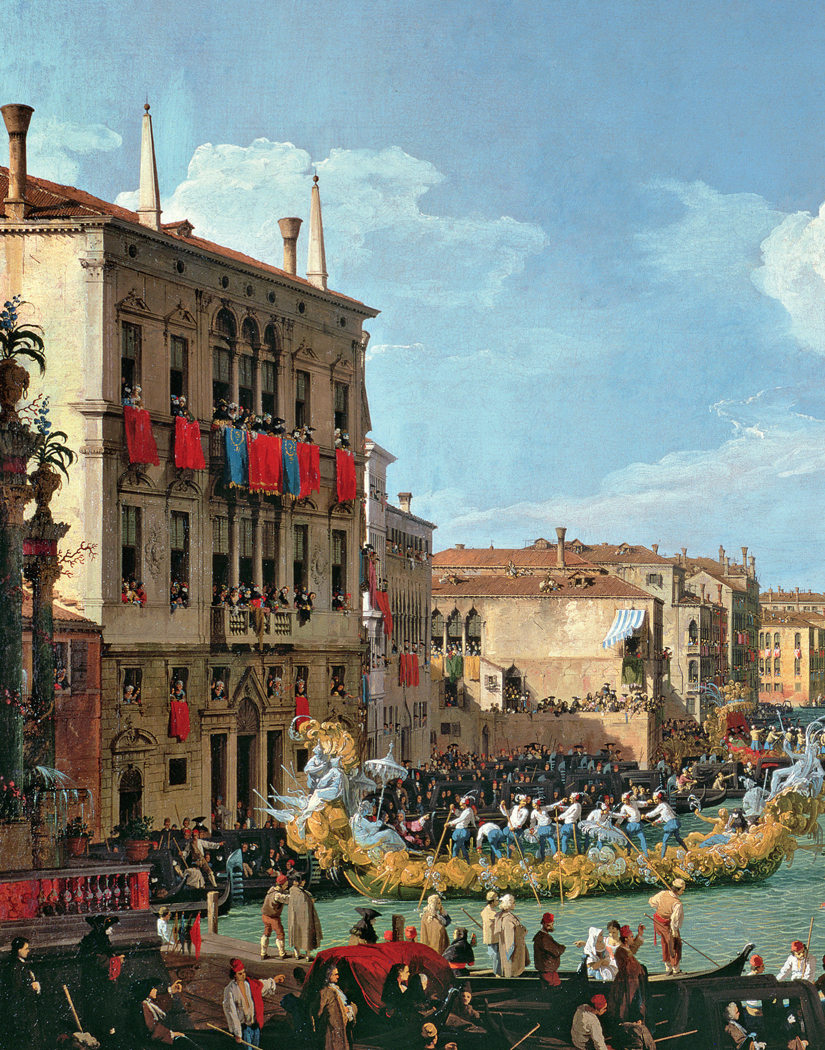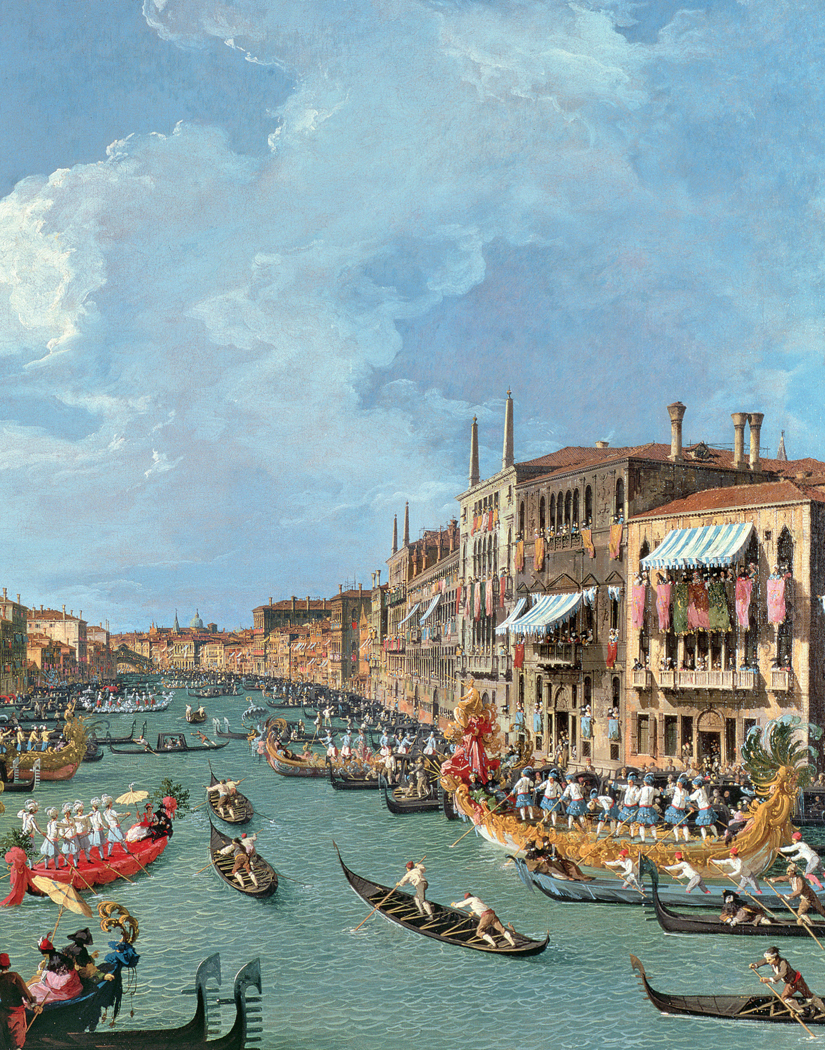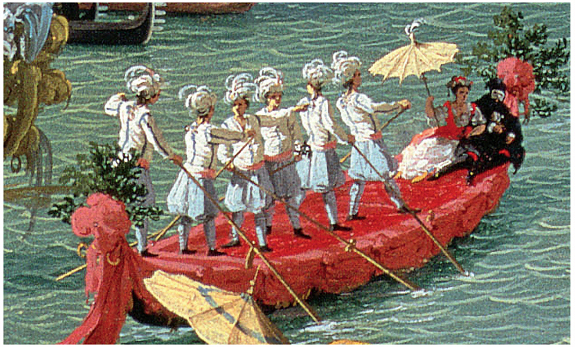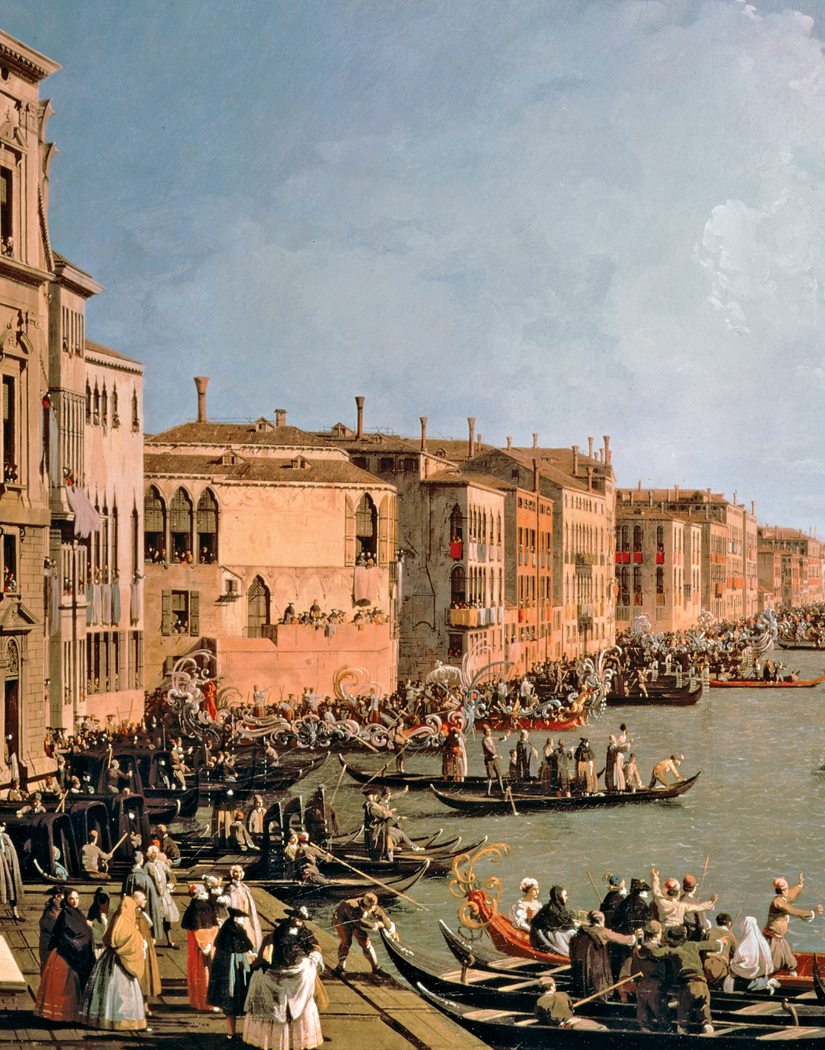

Musica Popolare
Opera, though immensely popular with an elite audience in seventeenth and eighteenth century Venice, was an art form aimed at the upper classes. Noblemen and women flocked to the city from all over Europe for the endless revelry of Carnevale and the endless delights of opera. To hear it, the listener had to pay to enter the theater, where professional singers declaimed noble sentiments in the elevated language of poetry. The operas were filled with characters from epics and tragedy: good kings and queens, wicked kings and queens, Tamerlane, Richard the Lionheart, Cleopatra. Yet the dilemmas they faced were unlikely to be confronted by the ordinary citizen in the course of daily life: loss of kingdom, the need to choose between poison or the sword as a means of suicide, the proper handling of a chariot hitched to two fire-breathing dragons.
Ordinary people had quite different ideas about what constituted musical entertainment, and they found it thriving outside of the theaters. They wanted, just as they want today, popular music. Popular. And what could be more popular than the Venetian barcarole, with its origin and its listeners both found among “la gente del popolo,” not a music-loving elite. Its origin was la barca, the boat, from which it was sung, often by the gondolieri themselves, though sometimes by semi-professional singers accompanied by a small group of musicians.
While the sophisticated arias of opera were performed from the stage of an elaborate theater, and the religious music for which Venice was equally famous was confined to sacred service within a church, the barcarole were simple songs intended to be sung in the open air. What better platform for beauty than the gondola, and what easier way to take the entertainment through the open air from one audience to another? Anyone who happened to be passing by was free to listen to the music and singing without having to attend Mass or pay to enter a theater: it might be history’s first example of free download.
The singers were concerned with stories from real life, not with princes, kings, and mythological heroes who, on the opera stage, killed enemies and monsters to rescue the princess. These were simple guys who were interested in the pretty blonde who lived in the house down the calle. Instead of conquering the walls of some foreign city, the singer remembered the thrill of going out to the Lido with his pals and girls from the neighborhood like Checca, Betta, and Catte. It’s hard to think of anything more popular – or real – than this. The lyrics illustrate daily life in Venice and give voice to the Venetians’ eternal desire to make fun of serious things, often contrasting melodies from opera with lyrics as banal as the face of the quite ordinary girl who is the subject of the song. However much his friends tell him she’s beautiful, the singer confides to his listeners that this is all a wild exaggeration and she’s really quite plain. Instead of a prince who longs for the love of his princess, comparing her to Helen and Venus, we listen to an Armenian transplanted to Venice who can’t get his tongue around the local dialect and is reduced to expressing his love for Cattina by singing “Tarapatà tà tà tà.” Is his love any less real or any less strong for that? There is also an undercurrent of sexuality in some of the lyrics, as in that of the singer who tells his sweetheart that he knows she keeps a garden she has not yet given to anyone. He graciously offers himself as the gardener who would work it for her.
Most of these canzoni were anonymous: one did not have to be a famous libretto writer like Metastasio to say that “Many people complain because they don’t have enough money in their pocket to pay to have a good time,” or “I can’t say she’s beautiful because she’s not beautiful.” Another song presents the listeners with a singing teacher whose class is a hilarious failure. These, however, are the songs that people delighted in hearing: even now, centuries later, most Venetians delight at the sound of the first notes of “La biondina in gondoletta” and are happy to sing along.
Consider the location of the performance: on the water, as the gondolas went back and forth, carrying singers, small musical ensembles to accompany them, lovers or wives and husbands, young men in search of adventure, while the people walking by on the embankments, not troubled by false compunction or ideas about proper behavior, shouted back and forth with the singer, called out praise or criticism. Popolare.
Not only did this musical world have pre-electric download, it also had copyright infringement. The gondolieri were allowed, by city ordinance, to enter theaters without having to buy a ticket, which meant that they could go into any one of the many opera houses in Venice, listen until they heard a tune they liked, and then – either by a feat of memory or an act of transcription – go back to work and sing it as they had heard it sung. The original composer, rather than contact his lawyer, was often flattered and helped by this attention, for it would, by immediately disseminating his work to a wider audience, add to his fame while encouraging some of the public to go to the theater, pay for a ticket, and hear the rest of his opera.


Visitors to the city were apparently as charmed by these songs as were the locals: the Englishman, John Walsh, took the tunes home with him and, in 1742, published a large volume. He was careful, however, to attribute them to well-known composers like Hasse (who does happen to be buried in Venice) and “other celebrated Italian Masters,” no doubt to attribute a more respectable provenance to them than to admit that they were the simple products of local musicians, men who sang for the love of it and the sound of it and the fun of it. How terribly popolare, eh?
And what more popolare than the lament of the young woman who discovers that the heart of the man she loves is already full to over flowing? Cecilia Bartoli, special guest artist, unites the world of opera and barcarole and shows the special beauty of both.